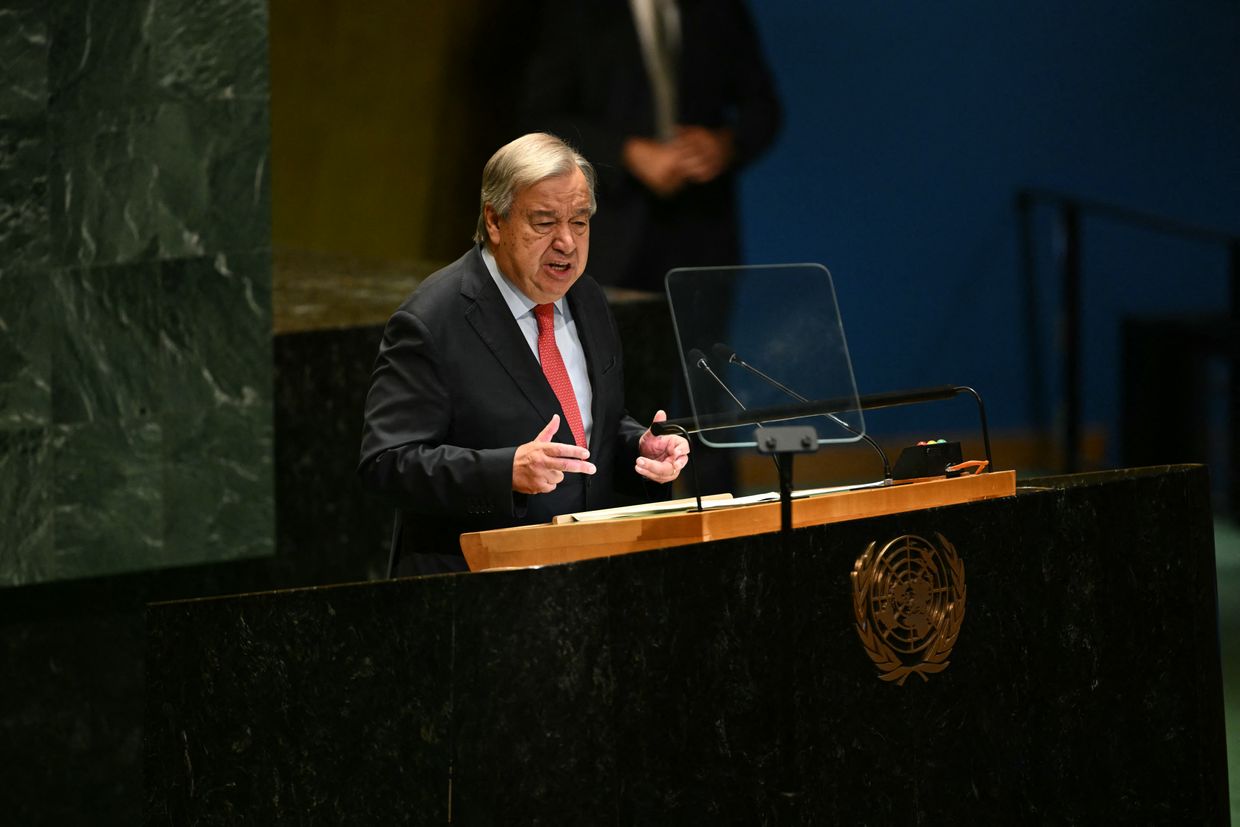U.N. Secretary-General Antonio Guterres arrived at the BRICS summit in the Russian city of Kazan on Oct. 22, despite criticism from Ukraine, Voice of America reported.
The BRICS group, a bloc of countries that includes Brazil, Russia, India, China, South Africa, Iran, Egypt, Ethiopia, and the United Arab Emirates, is convening in Kazan for a three-day summit from Oct. 22-24. According to Moscow, 36 world leaders are participating in the conference.
Guterres is expected to meet Russian President Vladimir Putin on the sidelines of the event on Oct. 24, according to Russian presidential aide Yuri Ushakov.
Ukraine’s Foreign Ministry criticized the U.N. secretary general’s visit.



The occupation never ended, it became more extreme with the blockade
De-development via the Gaza Occupation
The Israeli imposed closure on Gaza began in 1991, temporarily, becoming permanent in 1993. The barrier began around Gaza around 1972.
Page 402
The Gaza Strip: The Political Economy of De-Development - Third Edition by Sara M. Roy
Blockade, including Aid
Hamas began twenty years into the occupation during the first Intifada, with the goal of ending the occupation. Collective punishment has been a deliberate Israeli tactic for decades with the Dahiya doctrine. Violence such as suicide bombings and rockets escalated in response to Israeli enforcement of the occupation and apartheid.
After the ‘disengagement’ in 2007, this turned into a full blockade; where Israel has had control over the airspace, borders, and sea. Under the guise of ‘dual-use’ Israel has restricted food, allocating a minimum supply leading to over half of Gaza being food insecure; construction materials, medical supplies, and other basic necessities have also been restricted.
Settlements, Occupation, and Apartheid
Israel justifies the settlements and military bases in the West Bank in the name of Security. However, the reality of the settlements on-the-ground has been the cause of violent resistance and a significant obstacle to peace, as it has been for decades.
This type of settlement, where the native population gets ‘Transferred’ to make room for the settlers, is a long standing practice.
The mass ethnic cleansing campaign of 1948:
Further, declassified Israeli documents show that the Occupation of the West Bank and Gaza Strip were deliberately planned before being executed in 1967:
While the peace process was exploited to continue de-facto annexation of the West Bank via Settlements
The settlements are maintained through a violent apartheid that routinely employs violence towards Palestinians and denies human rights like water access, civil rights, etc. This kind of control gives rise to violent resistance to the Apartheid occupation, jeopardizing the safety of Israeli civilians.
Visualizing the Ethnic Cleansing
Peace Process and Solution
Both Hamas and Fatah have agreed to a Two-State solution based on the 1967 borders for decades. Oslo and Camp David were used by Israel to continue settlements in the West Bank and maintain an Apartheid, while preventing any actual Two-State solution
How Avi Shlaim moved from two-state solution to one-state solution
‘One state is a game changer’: A conversation with Ilan Pappe
One State Solution, Foreign Affairs
Hamas proposed a full prisoner swap as early as Oct 8th, and agreed to the US proposed UN Permanent Ceasefire Resolution. Additionally, Hamas has already agreed to no longer govern the Gaza Strip, as long as Palestinians receive liberation and a unified government can take place.
On Hezbollah:
Unfortunately the spoiler tags didn’t work, but I appreciate the attempt to keep it readable and split the wall of text.
I admit it’s a shit show and the last decades have done nothing but further radicalize both sides. The unconditional support Israël seems to get is also bullshit… they need to be toned down.
The settlements in the west bank will get no defense from me, even the Olso accords that made this possible are bullshit… Israel should not be there or at least have no civilians there. 3 zones… ppppffff…
The Gaza Strip should have an open border with at least the sea, but if Gaza again sparks violence like in the 90s and October last year, they will be at war again. And bad faith proposals like the Oct 8th swap by Hamas can be ignored… with dire consequences.
Hezbollah is just an Iranian vanity project to fuck with Israël and the US for minimal cost, same as the Houthi rebels in Yemen. Edit: the graph seems disingenuous. As a single attack with 62 missiles by Hezbollah is 1 attack, an f35 throwing a bomb on Hezbollah is 1 attack…
And the Golan heights will never be returned as it’s too important a deterrence against Syria.
It may be your app if the spoilers aren’t working, they are on Thunder.
Iran did not create Hamas, Hezbollah, or Houthis. They all began as anti-colonialist resistance and have their own aims.
GDF’s video on how Hezbollah began is well sourced and thoroughly layed out. The thumbnail is edgy clickbait I recommend to ignore, but the video is genuine.
Yemen has been undergoing a US-Saudi backed genocide for years.
Quotes
US complicity in the Saudi-led genocide in Yemen spans Obama, Trump administrations